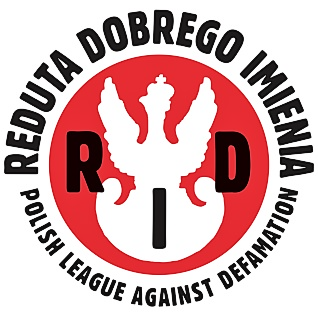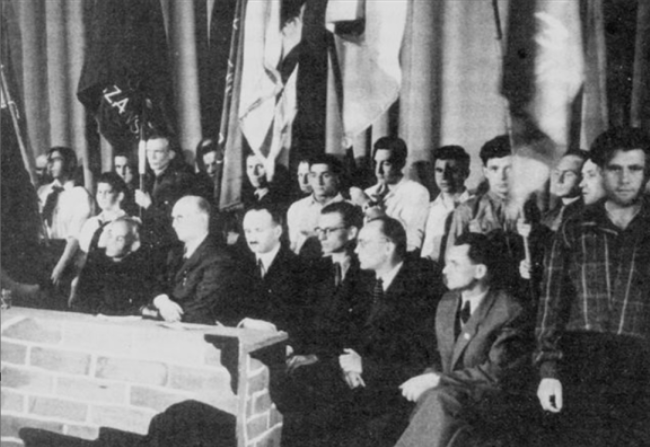When World War II broke out, the German leader and one of the greatest criminals in history (but that was yet to be revealed), Adolf Hitler, did not have specific plans regarding the Jewish population. Nevertheless, he genuinely hated and persecuted people of this nationality ever since he came to power in a state he called the Third Reich.
Until September 1939, Nazi reprisals targeted only Jews living in Germany and Austria. At that time, they were stripped of their citizenship, expelled from government offices, had their properties confiscated, and were subjected to hostile propaganda. Hitler intended to force Jews to leave the country he ruled, similar to what the brilliant physicist Albert Einstein did. The latter moved to the United States at the end of 1932, ostensibly for scientific purposes. However, when he learned a few months later that the Nazi National Socialist German Workers’ Party had won parliamentary elections, he decided to stay in the USA.
The true machinery of crime was set in motion by Hitler and his associates only after the outbreak of World War II when Germany, and later the Soviet Union, invaded Poland, making it the greatest victim of the war’s turmoil. During that period, Poles began to experience universal, criminal terror targeting all social classes and professional groups. Thus, the Republic of Poland witnessed the brutal realities of two of the most bloody totalitarian systems – German Nazism and Soviet communism.
Germany first struck at the Polish leadership. Initially, the Nazis established infamous concentration camps for people from this elite. Additionally, they decided to incorporate part of Poland into the borders of the Third Reich, creating the General Government from the remaining territories. The latter was an administrative area primarily used by the Nazis as a reservoir for cheap labor, resources, and food. In the long term, the Germans planned to annex the General Government to the Reich after cleansing the area of all inconvenient nations, mainly Poles and Jews. Consequently, many inhabitants of the General Government, which was initially divided into four and later into five districts, were deported for forced labor to Germany, subjected to roundups leading to concentration camps, or mass-murdered in street executions, and so on.
Of course, the Jewish population, which was quite numerous in Poland before 1939, did not escape terror either. Almost from the very beginning of the German occupation, Jews were either killed or, in the vast majority, sent to special districts called ghettos, which were located in almost every Polish city. There they were stripped of dignity, living in terrible, degrading conditions leading to death from various diseases. However, due to the significant number of Jews, the Nazis decided to carry out the „final solution to the Jewish question,” i.e., the extermination of European Jews.
In the General Government, this operation was codenamed „Reinhard” – after the name and surname of one of the greatest Nazi criminals, SS-Gruppenführer Reinhard Heydrich, who presented the plan for the extermination of the Jewish population at a special conference held in Wannsee in early 1942. In the General Government, this operation was led by the chief of the SS and Police in the Lublin district, Odilo Globocnik. It began in March 1942 with the liquidation of the Lublin ghetto. Jews were transported from this place to extermination camps, including Belzec, where mass extermination in gas chambers began. The same fate awaited the inhabitants of all ghettos, including the Warsaw Ghetto, which was brutally liquidated in the summer of 1942.
Seeing what was happening to Polish Jews in the General Government, a group of Polish intellectuals decided to organize the Temporary Committee for Aid to Jews „Żegota” in September 1942 (named after one of the conspirators from Part III of Adam Mickiewicz’s „Dziady”). The Committee included representatives of four organizations: the Front for the Rebirth of Poland, the Polish Democratic Organization, the Polish Socialist Party – Freedom, Equality, Independence, and the Polish Syndicalist Union. However, the main initiators of the establishment of „Żegota” were two women – the writer Zofia Kossak-Szczucka and the artist and political activist Wanda Krahelska-Filipowicz (both were later awarded the Righteous Among the Nations medal after the war).
On December 4, 1942, the Committee was renamed the Council for Aid to Jews „Żegota” and operated under the Government Delegation for Poland, the main administrative authority in occupied Poland. It was the only organization in the entire Europe that systematically assisted the Jewish population in surviving the cruel period of World War II. Its task was defined in one of the letters: „The task of the Council is to provide assistance to Jews as victims of the occupier’s extermination actions, assistance in saving them from death, legalizing them, allocating them spaces, providing material benefits, and, where necessary, seeking employment as the basis of existence, managing funds and their distribution – in other words, activities that directly or indirectly fall within the scope of assistance.”
Representatives of various political parties and groups were involved in „Żegota.” In addition to the previously mentioned founders, activists from the Workers’ Party of Polish Socialists, the Democratic Party, and the Peasant Party, as well as the Jewish Bund and the Jewish National Committee, were among the most important. The overall coordination was led by Julian Grobelny, associated with PPS-WRN, followed by Roman Jabłonowski and Leon Feiner.
Today, historians estimate that „Żegota” provided assistance to several thousand Jews – both those hiding on the so-called Aryan side and those in ghettos and camps. The organization provided financial and food assistance, helped create false documents, find safe shelters, and, in the case of children, placed them, for example, with Polish families or in various care facilities, such as Catholic monasteries. In the latter task, another Righteous Among the Nations, Irena Sendler, played a leading role. Additionally, the Council provided clandestine press information about the extermination of Jews. The Polish society was also informed about this terrible tragedy through the distribution of leaflets and the printing of posters, among other methods.
One of the members of „Żegota,” Władysław Bartoszewski, later said about the organization’s activities: „However, given that the main part of the tragedy of the Jewish population took place on our territory, these actions [aid to Jews] could concern thousands of people but not millions. And they fade into the background compared to the tragedy of millions. But I constantly remind that according to the Old Testament, ten people were missing to save Sodom. In Poland, thousands of these Righteous were found… I think that not only the Jews saved in infernal conditions owe them something but also all of us, both contemporaries and descendants.”

